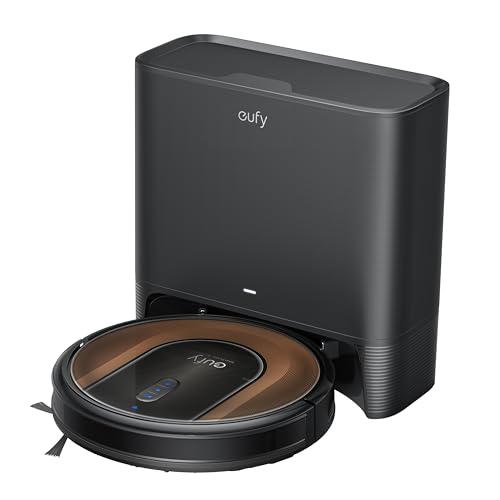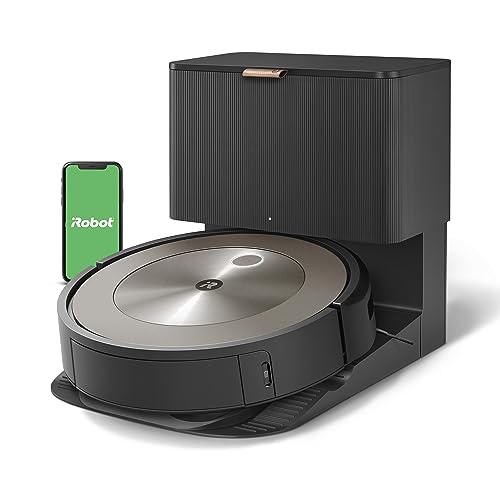Why Everyone Is Talking About Self Emptying Robot Vacuum Today
페이지 정보
작성자 Zoe 작성일24-06-03 09:19 조회892회 댓글0건관련링크
본문
 The Convenience of a Best Self Emptying Robot Vacuum For Pet Hair Emptying Robot Vacuum
The Convenience of a Best Self Emptying Robot Vacuum For Pet Hair Emptying Robot VacuumA self emptying robot vacuum collects debris and puts it in an even bigger storage bin within its docking station instead of release it back in the air. This is a major benefit for people suffering from allergies.
If you have a large house, consider a model that has a long runtime as well as an enormous dust bin that can return to its original location to recharge between cleaning sessions. App integration is also important as it allows you to create no-go zones and adjust settings like suction power.
1. Less Icky
One of the biggest disadvantages of the regular robotic vacuums is that they often have small dustbins that require manual emptying every few cleaning sessions. This can be a pain particularly if someone in your household has allergies and the emptying of the small dust bin usually results in a mess of unpleasant debris being thrown up into the air. This issue can be solved with self-emptying robots that automatically empty their collection containers into a larger bin. This will bring the dream of a fully automated household closer to becoming a reality.
Generally speaking, self-emptying robots use a dock that is specially designed to does not just charge the device but is also connected to a number of vacuums that pull dirt and debris from the canister for collection and then store it in a large container. When the canister is empty, the device will return to its dock and empty its contents. Then it'll move to a new spot in the house to get it cleaned. This process is less annoying than emptying the dust bin onboard and is also much simpler to accomplish since you won't have to breathe the dust that is released into the air when it occurs.
The disadvantage of the self-emptying system is that it adds to the cost of a best robot vacuum with self empty vacuum. This is something to keep in mind when deciding on the right model for your needs. You should also ensure that the size of the container is sufficient for your desired cleaning frequency and home size.
Self-emptying robot vacuums aren't essential for all people, but it could be an absolute lifesaver for those suffering from allergies and busy families that are looking to cut down on time and get rid of the headache of emptying a trashcan. It's also a great choice for those with large homes that are too difficult to cover with just a single robot vacuum, without having to constantly empty the machine's small dustbin.
Many self-emptying robots are designed to ease your life and come with features like app control, scheduling capabilities, mapping technology mop/vacuum switch features, and much more. They can also be connected to your Wi-Fi and smart home devices, allowing you to control them even if you're not home.
2. Reduce the amount of waste
The tiny robots that shuffle around your home and pick up dirt and best self emptying robot vacuum for pet hair pet hair are great however, their dustbins require regular emptying. They can also become tangled in stray items like shoelaces that are stray or phone chargers, or caught by the thick carpets and thresholds to doors.
The solution to the small dustbin problem with robot vacuums has been the introduction of self-emptying models. These vacuums return to their base automatically when the canister is filled and empty all that dirty debris into a bin that is a foot high that contains a disposable paper bag. The vac then resumes its cleaning routine that is pre-programmed.
These models can also tell when the battery is running low. They can then stop the cleaning process and return back to the base to charge and then resume cleaning process when the battery is fully recharged. If you're looking to have even more hands-off convenience, consider a device that can be programmed to automatically empty the battery at specific intervals (like every three months).
These models are more expensive than standard robot vacuums but they're worth the investment for some homes, especially for people with allergies or other respiratory problems. These models are designed to capture more dust hair, pet hair and other allergens than conventional vacuums. They can also reduce allergies symptoms.
The latest robot vacuums utilize intelligent technology to map your entire house prior to each cleaning session, which makes them more efficient than their earlier counterparts. They can also design "no-go" zones to avoid certain areas, like a child's toys or a rug you don't want to damage. Some allow you to schedule cleaning sessions each day, every week or when you're away. Certain models have a voice assistant and remote control to make it easier. They're perfect for busy households who want an easier, healthier living environment without spending a lot of time on the chores.
3. Less Time
Self-emptying robotic vacuums can eliminate one of the most time-consuming processes. While non-self emptying robots need their onboard dustbin cleaned after each cleaning session They automatically transfer debris from their onboard dustbin to a larger bin at their base station when they notice that the bin is full. This makes it unnecessary for cleaning sessions to be interrupted to empty the bin and makes it much easier for busy people to accomplish.
To test the capability of a self-emptying robotic system to transfer debris from its dustbin to its base that it is charging, we added a weighted amount of dry debris to the robot's onboard dustbin and measured the percentage that landed in its charging dock receptacle. In our tests, models that transferred more of the dry debris into the dustbin bag for charging or bin received a better score.
This is especially beneficial for busy families or people who have mobility issues, since it can eliminate the need to stop cleaning to empty and open the dust bin that is built into the robot. If you want to keep track of the progress of your robot, certain models are connected to voice assistants like Alexa or Google Home so that you can control them with just a few commands. They also let you create no-go zones, track the robot's performance, adjust settings and schedule cleaning time-outs- a huge help for those who have limited free time.
It is important to note that even though self-emptying robots are less of a time consuming chore to perform, it is still louder than conventional vacuums. This is a crucial aspect to take into consideration if you're sensitive to sound. If you are concerned about noise levels, you should look for robots that have an 'In-Situ' Mode. You can also schedule your cleaning times while away from home.
Because of these advantages, robots tend to be less time-consuming to use than other vacuums. This means that you will be able to make use of them more often and help keep your floors cleaner for longer.
4. Less Money
As a feature that is convenient as a convenience feature, the self-emptying robot vacuum can add functionality and value to compatible robot vacuum models. It eliminates the need for you to empty the dustbin on the robot, which can be time-consuming and messy. It makes it easier to use a robot vacuum in larger houses in which you might need to run it more often.
Self-emptying robots are generally a bit more expensive than other kinds of robots. They are more expensive because they have a complicated system for storing and managing the waste and dirt they gather. Some robots have an automatic hopper that discharges the debris it collects into a bin. The capacity is usually around 2.5-3 litres. You'll only need to empty the bin every two or three cleaning cycles. This could save you time and effort over the life of the robot.
The most advanced self-emptying robots also can create an exact map of your home and allow you to label rooms and define virtual no-go zones. Some of them can also connect to voice assistants such as Alexa to let you manage them and make adjustments to the cleaning methods they use. The top models are not cheap. They can cost more than $1000.
While a self-emptying robot vacuum takes some of the hassle out of cleaning, it's still not completely foolproof. The most adept of robot vacuums could be stuck under furniture, on door thresholds or on thick rugs, and get caught by things like shoelaces, cords, phone chargers and pet toys. When this happens, it could need a thorough floor examination before you let your robot go, or it could simply give up and send an SOS to you for help.
The other drawback of the self-emptying model is that it's a large and heavy unit. This can make it difficult for robots fit into tight places. It takes up lots of space on your kitchen table or coffee table counter, particularly in the case of an external bin that has the capacity of six litres.

댓글목록
등록된 댓글이 없습니다.



